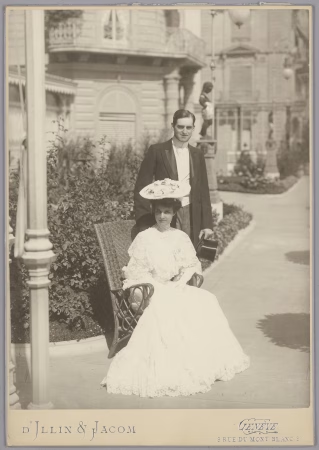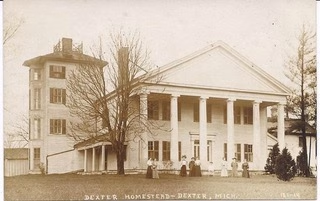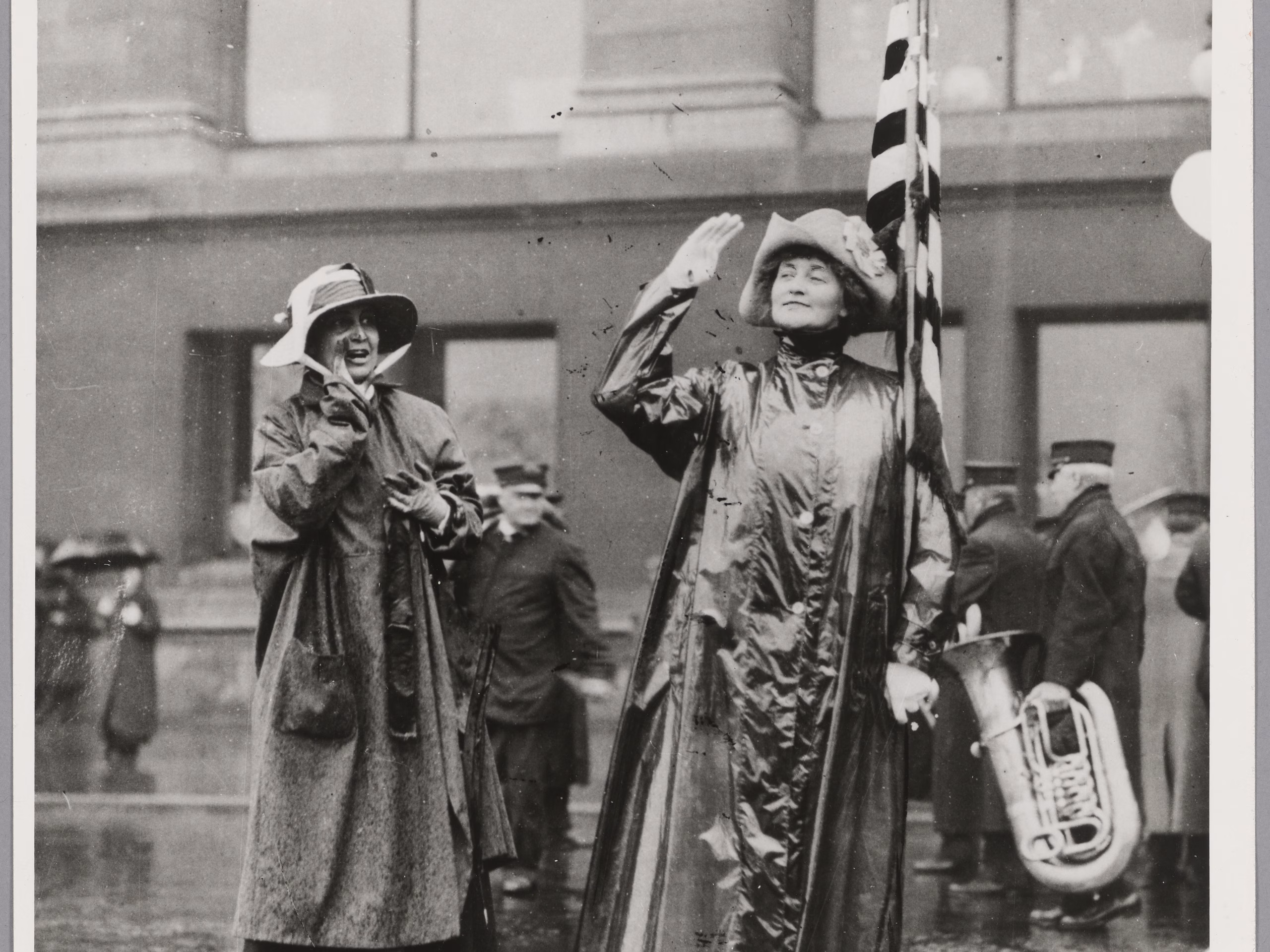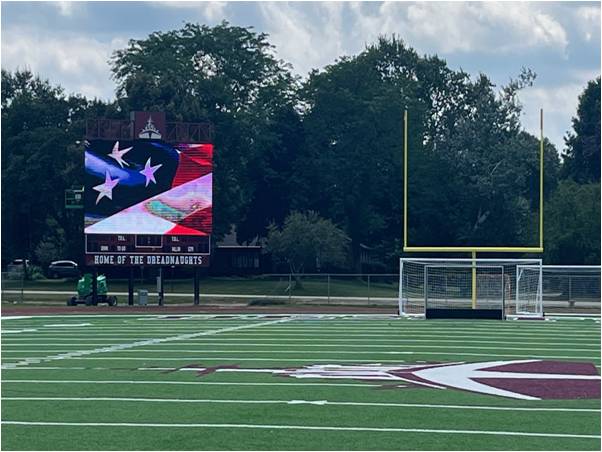Katharine McCormick’s unwavering advocacy helped shape the women’s suffrage movement, the League of Women Voters, and modern reproductive health, including funding the first birth control pill.
By the Dexter Area Historical Society
Photo: Suffragette Katharine Dexter-McCormick shown on the left. Courtesy MIT Museum
Editor’s Note: Katharine Dexter McCormick, the granddaughter of our founder, Samuel Dexter, was born on August 27,1875, here in Dexter in Gordon Hall. During her life she made a significant impact on women’s equality in the areas of suffrage, birth control and education. To commemorate the life of one of our own on the 150th anniversary of her birth, the Dexter Area Historical Society has written a series of articles to share her amazing story with you.
This is the second article in the series, telling of her work for women’s rights and health.
__________________________________________________________________________________________
Katharine and Stanley McCormick were married in 1904 at a Chateau in Geneva, Switzerland, which her mother had purchased some years earlier. Prior to her marriage to Stanley, Katharine had been concerned about his erratic behavior and dramatic mood swings, having called off their engagement more than once.

Once they married, Stanley’s behavior did not improve, and he continued to spiral downward in spite of Katharine’s consistent efforts to calm and reassure him. Stanley was treated by several prominent physicians and subsequently diagnosed with schizophrenia. Katharine and the McCormick family were continually at odds regarding Stanley’s treatment, and she fought successfully to remain his guardian while constantly seeking and actually funding research into new medical treatments.
He was admitted to several psychiatric hospitals and eventually received around-the-clock medical care at Riven Rock, a McCormick family estate in Montecito, California, where he was cared for until his death in 1947.
While completing her degree at the Massachusetts Institute of Technology (MIT), Katharine was involved in the College Equal Suffrage League, which appealed to her due to the battles she was fighting while pursuing a college degree at a male-dominated university. Katharine’s intelligence, social connections, extensive travel experiences, as well as her fluency in French and German, impressed the leaders of the women’s suffrage movement.
She was encouraged to become involved in the national movement but chose instead to initially become involved with the Massachusetts Woman Suffrage Alliance (MWSA), traveling extensively for two months during which they held 97 meetings and spoke to more than 25,000 people. Katharine’s fearless attitude toward hecklers was noted and her tireless work to secure the right of women to vote had begun. She then moved on to the National organization, where she served admirably as the treasurer and donated financially to the cause herself.
She was then elected Vice-President of the National American Woman Suffrage Association (NAWSA), where she took on additional responsibilities, including training state delegates and chairing the Woman’s Committee of the National Council of Defense during World War I. She also frequently met with state and national leaders to eloquently and convincingly press for suffrage. After many years of great personal commitment and sacrifice to the suffrage movement, Katharine and the members of the National Woman Suffrage Association saw the passage of the 19th Amendment in 1920.

Once the right of women to vote was secured, the challenge of holding together an extremely varied group of two million women to focus them on a new agenda based on the expectations of all classes of women was daunting. Katharine and Carrie Chapman Catt took on the challenge and moved forward with a plan that eventually developed into the League of Women Voters.
Two important goals were agreed upon, which were to promote the political education of newly enfranchised women and to establish procedures that would give women the opportunity to take part in the clearly male-dominated political process. Mrs. Catt (as she was generally referred to) and Katharine differed on the emphasis to be placed on the new organization. Katharine preferred to see the League focus on the social needs of women and Mrs. Catt wanted to promote it as a politically oriented organization. The League of Women Voters continues to this day as a valuable, nonpartisan, grassroots organization working to protect and ensure voting rights for all in local communities. Katharine played a crucial role in its development.
As a continuation of her concerns for the social needs of women, in 1921 Katharine met Margaret Sanger, a nurse who had worked in the slums of New York City and often treated poor mothers who had resorted to unsafe abortions as a way to avoid additional children whom they could not support.

Sanger had opened clinics to provide reproductive health services in the form of contraceptives but she did not offer abortions. Katharine was impressed with Sanger’s unflagging commitment to the cause of women’s health and the control of their reproductive health. Sanger was impressed with Katharine’s scientific background, professionalism, social connections and willingness to take on controversial causes with determination and organizational skills. They became a formidable team as they worked toward better reproductive health for women.
Katharine supplied Sanger’s Clinical Research Bureau with over a thousand European-produced diaphragms at her own expense. She posed as a French or Germain scientist as she met with European diaphragm manufacturers and had them shipped to her Swiss Chateau. They were then sewn into the latest fashions she had bought in France to be shipped to her home in New York and then delivered to Sanger’s clinics for distribution.
Katharine’s great interest in women’s health continued in yet another direction. With Sanger’s urging and with her background as a scientist, Katharine took a keen interest in the research of Dr. Gregory Pincus as he worked on the development of the birth control pill. Katharine provided the critical financial support needed to move the difficult process forward to eventual completion.





 8123 Main St Suite 200 Dexter, MI 48130
8123 Main St Suite 200 Dexter, MI 48130


